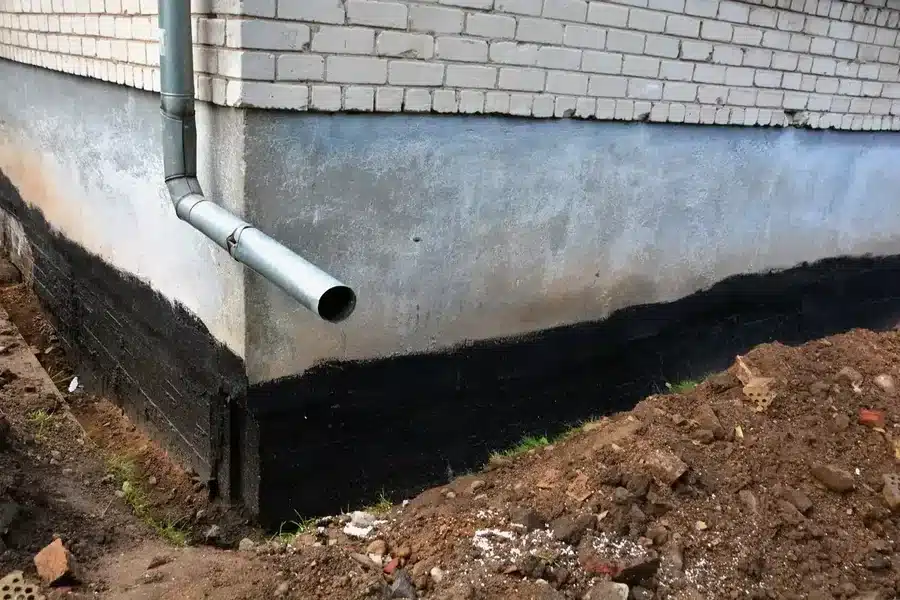Did you know that nearly 25% of homes in the United States experience some form of foundation issue, leading to costly repairs if left unaddressed? The importance of maintaining a home’s structural integrity cannot be overstated, and advancements in foundation repair techniques are making it easier to address these issues efficiently.
The industry is witnessing a significant shift with the integration of new technologies and materials, enhancing the durability and cost-effectiveness of foundation repair solutions. As we move into 2025, understanding the top techniques used in foundation inspection and stabilization is crucial for homeowners, contractors, and real estate investors to ensure the long-term stability of properties.
Understanding Modern Foundation Repair Techniques
The importance of understanding modern foundation repair techniques cannot be overstated, given the increasing frequency of extreme weather events. As climate change continues to affect soil conditions and foundation stability, homeowners and builders must be aware of the signs of foundation problems and the latest methods used to address them.
Signs of Foundation Problems can be subtle, but early detection is crucial to prevent further damage. Some common indicators include cracks in walls and floors, uneven floors, and doors and windows that stick or become difficult to open.
Signs of Foundation Problems
Recognizing the signs of foundation issues early on can save homeowners from costly repairs down the line. Some key signs to look out for include:
- Cracks in walls and floors, especially those that are wider than 1/4 inch
- Uneven or sagging floors
- Doors and windows that stick or are difficult to open
- Gaps between walls and ceilings or floors
Impact of Climate Change on Foundations
Climate change is having a profound impact on foundations, primarily due to extreme weather patterns that cause soil to expand and contract. This can lead to foundation settlement and instability.
Extreme weather events, such as heavy rainfall, droughts, and temperature fluctuations, are altering soil conditions, making it essential to adopt modern foundation repair techniques that can withstand these changes.
| Weather Event | Impact on Soil | Foundation Effect |
| Heavy Rainfall | Soil saturation and expansion | Foundation uplift or settlement |
| Drought | Soil shrinkage | Foundation settlement |
| Temperature Fluctuations | Soil contraction and expansion | Foundation instability |
Pre-repair Assessment Methods
Before any foundation repair can begin, a thorough assessment is necessary to determine the extent of the damage and the most appropriate repair method. Modern pre-repair assessment methods include:
- AI-powered inspections to analyze data and identify potential issues
- Real-time monitoring systems to track foundation movement and soil conditions
- Advanced imaging techniques to visualize foundation damage
By understanding the signs of foundation problems, the impact of climate change on foundations, and utilizing modern pre-repair assessment methods, homeowners and builders can ensure that foundation repairs are done efficiently and effectively.
Advanced Technologies in Foundation Stabilization
Advanced technologies are revolutionizing the field of foundation stabilization, offering more effective and long-lasting solutions. The use of innovative techniques and materials has significantly improved the way foundation repair is approached.
One of the most significant advancements in foundation stabilization is the use of helical piers. These are deep foundation elements that are screwed into the ground to transfer the weight of the structure to a more stable soil depth. Helical piers are particularly useful in areas with unstable soil conditions, as they can be installed to depths that reach stable soil or bedrock.
The process of installing helical piers involves screwing them into the ground using hydraulic machinery. This method is less invasive than traditional foundation repair techniques and can be completed more quickly. According to a study, “Helical piers have become a popular choice for foundation repair due to their versatility and effectiveness in a variety of soil conditions.”
Another technology gaining traction is the use of polyurethane foam injection. This technique involves injecting expanding foam into the voids beneath the foundation, lifting and stabilizing the structure. It’s a minimally invasive method that can be used to repair foundations without extensive excavation.
The benefits of advanced technologies in foundation stabilization are numerous. They offer:
- Improved stability and longevity of the foundation
- Reduced disruption to the property and its surroundings
- Faster installation times compared to traditional methods
- Cost-effectiveness in the long term due to reduced need for future repairs
As the industry continues to evolve, we can expect to see even more innovative solutions emerge. The key to successful foundation stabilization lies in choosing the right technology for the specific conditions of the property. By leveraging advanced technologies like helical piers and polyurethane foam injection, homeowners and builders can ensure that their structures remain safe and stable for years to come.
“The future of foundation repair is in embracing these advanced technologies that not only provide immediate solutions but also contribute to the long-term integrity of the structure.”
Eco-Friendly Foundation Repair Solutions
The growing concern for environmental sustainability has led to a rise in eco-friendly foundation repair methods. As the construction industry continues to evolve, the need for sustainable practices in foundation repair is becoming more apparent. This shift is driven by the desire to reduce the environmental footprint of repair activities while maintaining the integrity of the structures.
Sustainable Materials in Foundation Repair
The use of sustainable materials is a critical aspect of eco-friendly foundation repair. Materials such as recycled steel and environmentally friendly coatings are being increasingly used. These materials not only reduce waste but also minimize the environmental impact of the repair process.
Some of the benefits of using sustainable materials include reduced carbon emissions, lower waste generation, and the conservation of natural resources. For instance, using recycled steel can reduce the need for new steel production, which is energy-intensive and contributes to greenhouse gas emissions.
Water Management Innovations
Effective water management is crucial in preventing foundation damage. Innovations in this area include the use of permeable pavers, advanced drainage systems, and waterproofing technologies that are environmentally friendly.
These innovations help in managing water runoff and preventing water accumulation around the foundation, which can cause damage over time. By adopting such measures, homeowners can protect their foundations while also contributing to a more sustainable environment.
Green Construction Methods
Green construction methods emphasize minimizing environmental impact while ensuring the structural integrity of the foundation. Techniques such as using locally sourced materials, minimizing waste, and employing energy-efficient equipment are being adopted.
These methods not only contribute to a more sustainable construction process but also enhance the durability and performance of the foundation repair. By integrating green construction methods into foundation repair, the industry is moving towards a more environmentally conscious future.
Cost Analysis and ROI of Different Repair Methods
When it comes to foundation repair, cost analysis and return on investment (ROI) are key considerations. The cost of foundation repair can vary widely, depending on the severity of the damage and the repair method used.
More foundation repair companies are adopting fixed-price quotes for transparency, helping homeowners understand what they are paying for. The cost can range from a few hundred dollars for minor repairs to several thousand dollars for more extensive work.
To give you a better understanding, here’s a breakdown of the costs associated with different foundation repair methods:
| Repair Method | Average Cost | ROI |
| Patch Repair | $500-$1,000 | High |
| Foundation Underpinning | $2,000-$5,000 | Very High |
| Piering | $1,500-$3,000 | High |
The ROI of foundation repairs is also a critical factor, as a well-repaired foundation can significantly increase a property’s value. According to industry experts, investing in foundation repair can yield an ROI of up to 50% or more at resale.
Understanding the cost implications of different foundation repair methods is essential for making informed decisions. By analyzing the costs and ROI, homeowners can choose the most financially savvy solution for their foundation issues.
Conclusion: Choosing the Right Foundation Repair Approach
Selecting the right foundation repair approach is crucial for ensuring the long-term stability and value of a property. With various techniques and technologies available, homeowners and contractors must consider the latest advancements in foundation repair.
The use of advanced stabilization methods, eco-friendly repair solutions, and pre-repair assessment methods can significantly impact the effectiveness of the repair. By understanding the signs of foundation problems and the impact of climate change on foundations, individuals can make informed decisions about their foundation repair.
Staying informed about the latest trends in foundation repair and choosing a trusted foundation repair partner is essential. This enables individuals to choose a foundation repair approach that addresses their specific needs, ensuring a stable and secure foundation for years to come.
By adopting the right foundation repair method, property owners can protect their investment and avoid costly repairs down the line. The key is to choose a method that balances effectiveness with sustainability.
FAQ
What are the top foundation repair techniques used in 2025?
The top foundation repair techniques used in 2025 include advanced technologies such as helical piers, AI-powered inspections, and real-time monitoring systems, which provide more effective and long-lasting solutions for foundation issues.
How can I identify signs of foundation problems?
Signs of foundation problems can include cracks in walls and floors, uneven floors, and doors and windows that stick. Regular inspections are crucial, especially in areas with unstable soil conditions or extreme weather patterns.
What is the impact of climate change on foundations?
Climate change, with its extreme weather patterns, is increasingly affecting foundations, making regular inspections more crucial than ever. Rising temperatures and changing precipitation patterns can cause soil to shift, settle, or erode, leading to foundation damage.
What are pre-repair assessment methods?
Pre-repair assessment methods include AI-powered inspections and real-time monitoring systems, which revolutionize how foundation issues are diagnosed and addressed, providing a more accurate and efficient assessment of the problem.
What are some eco-friendly foundation repair solutions?
Eco-friendly foundation repair solutions include the use of sustainable materials, such as recycled steel, innovations in water management, and green construction methods that emphasize minimal environmental impact, contributing to a more sustainable future.
What is the cost range for foundation repair?
The cost of foundation repair can range from a few hundred dollars for minor repairs to several thousand dollars for more extensive work, depending on the severity of the issue and the chosen repair method.
What is the ROI of foundation repair?
A well-repaired foundation can significantly increase a property’s value, providing a strong return on investment. The ROI of foundation repair depends on various factors, including the extent of the repair and the local real estate market.
How do I choose the right foundation repair approach?
Choosing the right foundation repair approach involves considering factors such as the type and severity of the foundation issue, the soil conditions, and the environmental impact of the repair method. It’s essential to select an approach that addresses the specific needs of the foundation.
What are helical piers, and how are they used in foundation repair?
Helical piers are a type of deep foundation technique used to transfer the weight of the structure to a more stable soil depth, particularly useful in areas with unstable soil conditions. They provide a stable and long-lasting solution for foundation issues.
How do sustainable materials contribute to eco-friendly foundation repair?
Sustainable materials, such as recycled steel, contribute to eco-friendly foundation repair by reducing the environmental impact of the repair process, conserving natural resources, and promoting environmentally responsible practices.






